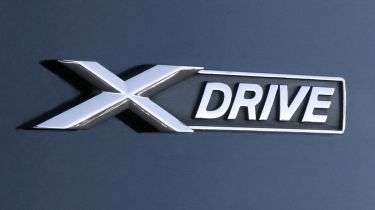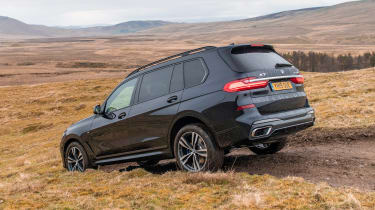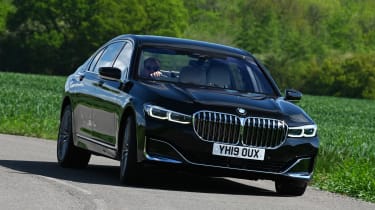BMW xDrive: what is it and how does it work?
Everything you need to know about xDrive, BMW’s all-wheel drive system.

Four-wheel drive is an increasingly common choice for motorists in the UK. The rise in popularity of SUVs and the increasing power outputs of today’s performance cars have both contributed to the growth of all-wheel drive as an option for car buyers. But even conventional models with relatively modest power outputs are being offered with 4x4 underpinnings for improved grip and safety in slippery conditions. Here we’re looking at BMW’s 4x4 system, which it refers to as xDrive.
Mercedes has 4Matic, Audi has Quattro and BMW has xDrive. They’re the brand names for the all-wheel drive technology each offers on its cars. BMW offers xDrive on SUVs like the X1, X3, X5 and X7, but also on core saloon and estate models like the 3 Series and 5 Series. The xDrive technology has even made its way into performance models like the M5 and M8 where it helps the cars deploy the prodigious power of their engines more effectively.
BMW’s use of xDrive 4x4 technology has been slightly contentious among BMW purists as a result of the German firm’s traditional ‘Ultimate Driving Machine’ philosophy that favoured rear-wheel drive and a 50/50 weight distribution. The majority of the range now comes with an xDrive variant of some kind and most fans and customers can appreciate the benefits that it is able to bring.
What is xDrive?
xDrive is classed as ‘all-wheel drive’. In the standard system during normal driving, 40 per cent of the power is sent to the front wheels and 60 per cent is sent to the rear. Then, when sensors detect wheel slip, power can be diverted forward, backwards or to individual wheels to help maximise grip and keep the car stable. The result of this should make xDrive BMWs hold the road better thanks to less possibility for unwanted traction loss in the corners, when making sudden maneuvers or in low-grip environments, including off-road.

Many other all-wheel drive systems are hydraulically operated, but xDrive uses an electronically controlled multi-disc clutch which is lighter and can re-distribute power more quickly. In extreme conditions, almost 100 per cent of the engine’s power can be sent to either axle in 0.1 seconds - this process constantly monitored and adapted by BMW’s Dynamic Stability Control (DSC) system of software and sensors. On performance BMWs, xDrive can be set up to send power predominantly to the rear wheels, only redistributing it forward when there’s wheel slip. This mimics the traditional rear-wheel drive handling characteristics BMWs has been renowned for in the past while ensuring that the cars can cope with the high power and torque outputs being offered today.
These more powerful BMW models feature Dynamic Performance Control which can utilise the electronically controlled clutch plates of the xDrive system to speed up the wheel opposite the one that’s spinning. It works with the DSC system that applies braking force to the spinning wheel to help it regain grip.
Do you need xDrive?
We’ve all contemplated purchasing a car with four-wheel drive once we see a light flurry of snow or (more typically in the UK) when our roads start to look like rivers after heavy rain. With four-wheel drive, you needn’t worry as much about losing grip on slippery surfaces like this or even on tricky off-road terrain but like any 4x4 system, xDrive isn’t a magic bullet and can’t create grip where there’s none to be had. You still need to proceed with caution.
If you want a BMW that can do some serious off-roading, the ‘X-series’ of SUVs such as the X5 and X7 are impressively capable. Then, on the road, xDrive BMWs offer a greater sense of security than their two-wheel drive counterparts, from the 1 Series hatchback right up to the 7 Series luxury saloon.

The 3 Series has been regularly crowned as the best handling compact executive car for the past three decades and fears that xDrive would ruin its handling proved unfounded. The all-wheel drive may take away some of the responsiveness and precise handling you get with the rear-wheel drive version but you’ll struggle to notice the difference in day-to-day driving. Even BMW’s M cars are transitioning to all-wheel drive now with the M5 able to change between rear and all-wheel drive at the touch of a button and the next M3 set to be all-wheel drive too.
One thing you’ll have to accept is a loss of efficiency. A rear-wheel drive BMW 320d will return a claimed 56.6mpg, a 320d with xDrive drops to 49.6mpg thanks mainly to the increased weight. For some, this will be a small price to pay given the traction advantages in bad weather. Others may decide they don’t need four driven wheels and can replicate some of the extra bad weather grip with a set of winter tyres.
Let us know what you think of BMW’s xDrive in the comments below...
Find a car with the experts



